There is the power amplifier circuit here:
How 18k/1k/.0012uF filter works in the input circuit?
It's clear for me that Q1/Q2 is a transconductance stage: voltage in - current out. But where is that "current" (that has been amplified and moving through Q9-Q8-Q7) are transformed back to voltage (to form a transimpedance stage)? How that transimpedance stage can be identified in that amplifier where there is no resistor in collector of voltage amplifier stage because of current source is used instead of that resistor?
Why 100 pF capacitor used at cascode? Is it not enough to use cascode to compensate Miller effect?
What is the purpose of 100 Ohm resistors at Q11/Q12 bases?
Why two different voltage sources are used for pre- and out- stages? And what is disatvantage if I will use one?
